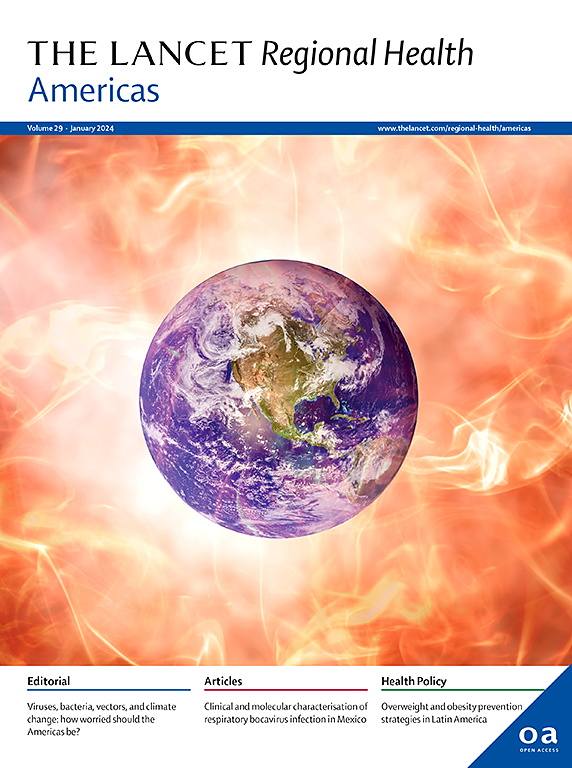Cannabis legalization and cannabis use disorder in United States Veterans Health Administration patients with and without psychiatric disorders, 2005–2022: a repeated cross-sectional study
IF 7
Q1 HEALTH CARE SCIENCES & SERVICES
引用次数: 0
Abstract
Background
We investigated whether the associations of state medical and recreational cannabis legalization (MCL, RCL enactment) with increasing prevalence of Cannabis Use Disorder (CUD) differed among patients in the United States (US) Veterans Health Administration (VHA) who did or did not have common psychiatric disorders.
Methods
Electronic medical record data (2005–2022) were analyzed on patients aged 18–75 with ≥1 VHA primary care, emergency department, or mental health visit and no hospice/palliative care within a given year (sample sizes ranging from 3,234,382 in 2005 to 4,436,883 in 2022). Patients were predominantly male (>80%) and non-Hispanic White (>60%). Utilizing all 18 years of data, CUD prevalence increases attributable to MCL or RCL enactment were estimated among patients with affective, anxiety, psychotic-spectrum disorders, and Any Psychiatric Disorder (APD) using staggered difference-in-difference (DiD) models and 99% Confidence Intervals (CIs), testing differences between patient groups with and without psychiatric disorders via non-overlap in the 99% CIs of their DiD estimates.
Findings
Among APD-negative patients, CUD prevalence was <1.0% in all years, while among APD-positive patients, CUD prevalence increased from 3.26% in 2005 to 5.68% in 2022 in no-CL states, from 3.51% to 6.35% in MCL-only states, and from 3.41% to 6.35% in MCL/RCL states. Among the APD group, DiD estimates of MCL-only and MCL/RCL effects were modest-sized, but the lower bound of the 99% CI for the DiD estimate for MCL-only and MCL/RCL effects was larger than the upper bound of the 99% CI among the no-APD group, indicating significantly stronger MCL-only and MCL/RCL effects among patients with APD. Results were similar for MCL-only and MCL/RCL effects among disorder-specific groups (depression, post-traumatic stress disorder [PTSD], anxiety or bipolar disorders) and for MCL/RCL effects among patients with psychotic-spectrum disorders.
Interpretation
Cannabis legalization contributed to greater CUD prevalence increases among patients with psychiatric disorders. However, modest-sized DiD estimates suggested operation of other factors, e.g., commercialization, changing attitudes, expectancies. As cannabis legalization widens, recognizing and treating CUD in patients with psychiatric disorders becomes increasingly important.
Funding
This study was supported by National Institute on Drug Abuse grant R01DA048860, the New York State Psychiatric Institute, and the VA Centers of Excellence in Substance Addiction Treatment and Education.
2005-2022年美国退伍军人卫生管理局患者中有和无精神疾病的大麻合法化和大麻使用障碍:一项重复横断面研究
背景:我们调查了在美国退伍军人健康管理局(VHA)患有或不患有常见精神疾病的患者中,国家医疗和娱乐大麻合法化(MCL, RCL颁布)与大麻使用障碍(CUD)患病率上升的关系是否存在差异。方法分析2005 - 2022年18-75岁患者的电子病历数据(样本数量从2005年的3,234,382例到2022年的4,436,883例),这些患者在给定的一年内进行了≥1次VHA初级保健、急诊科或精神卫生就诊,未接受临终关怀/姑息治疗。患者主要为男性(>80%)和非西班牙裔白人(>60%)。利用所有18年的数据,使用交错差中差(DiD)模型和99%置信区间(CIs),在情感性、焦虑、精神谱系障碍和任何精神障碍(APD)患者中估计MCL或RCL颁布导致的CUD患病率增加,通过其DiD估计的99% ci不重叠来测试有精神障碍和没有精神障碍的患者组之间的差异。在apd阴性患者中,全年CUD患病率为1.0%,而在apd阳性患者中,无cl州的CUD患病率从2005年的3.26%上升到2022年的5.68%,仅MCL州的CUD患病率从3.51%上升到6.35%,MCL/RCL州的CUD患病率从3.41%上升到6.35%。在APD组中,对MCL-only和MCL/RCL效应的DiD估计中等,但对MCL-only和MCL/RCL效应的DiD估计的99% CI下限大于无APD组的99% CI上限,表明APD患者中MCL-only和MCL/RCL效应明显更强。在特定疾病组(抑郁症、创伤后应激障碍(PTSD)、焦虑症或双相情感障碍)中,仅MCL和MCL/RCL效应的结果与精神谱系障碍患者中MCL/RCL效应的结果相似。大麻合法化导致精神疾病患者中CUD患病率增加。然而,中等规模的DiD估计表明了其他因素的作用,例如,商业化,态度变化,期望。随着大麻合法化范围的扩大,在精神疾病患者中识别和治疗CUD变得越来越重要。本研究由国家药物滥用研究所资助R01DA048860,纽约州精神病学研究所和退伍军人事务部物质成瘾治疗和教育卓越中心支持。
本文章由计算机程序翻译,如有差异,请以英文原文为准。
求助全文
约1分钟内获得全文
求助全文
来源期刊

Lancet Regional Health-Americas
Multiple-
CiteScore
8.00
自引率
0.00%
发文量
0
期刊介绍:
The Lancet Regional Health – Americas, an open-access journal, contributes to The Lancet's global initiative by focusing on health-care quality and access in the Americas. It aims to advance clinical practice and health policy in the region, promoting better health outcomes. The journal publishes high-quality original research advocating change or shedding light on clinical practice and health policy. It welcomes submissions on various regional health topics, including infectious diseases, non-communicable diseases, child and adolescent health, maternal and reproductive health, emergency care, health policy, and health equity.
 求助内容:
求助内容: 应助结果提醒方式:
应助结果提醒方式:


